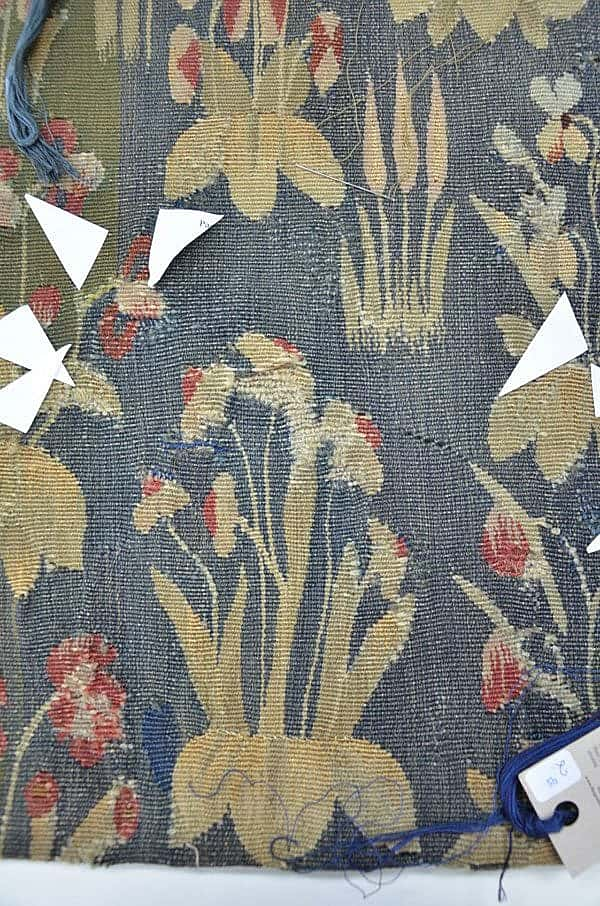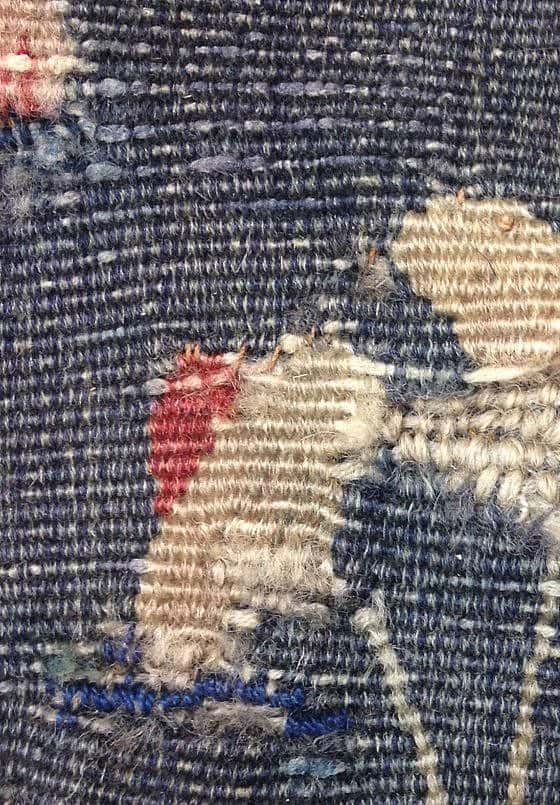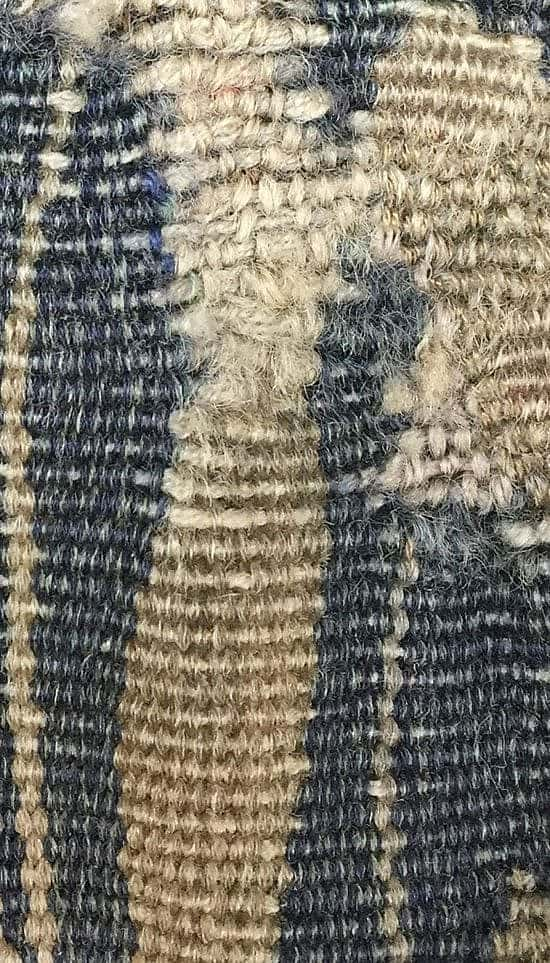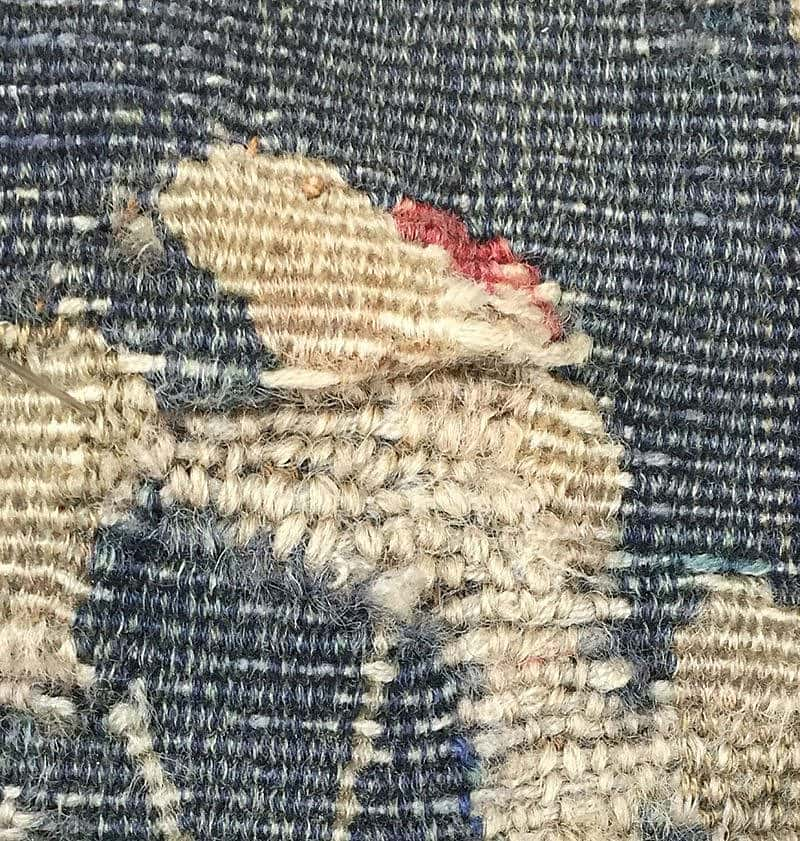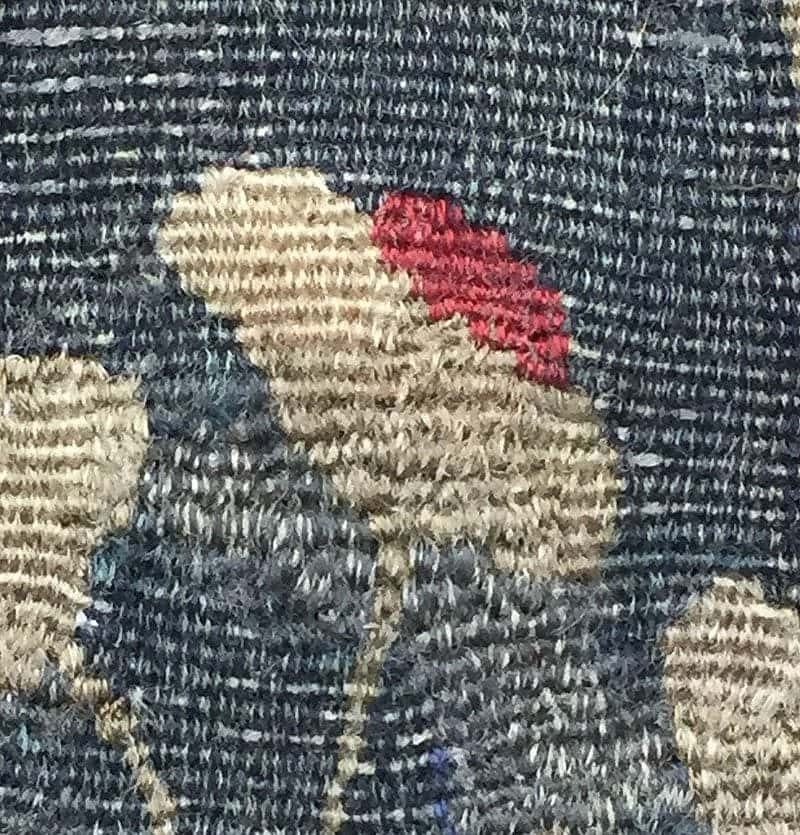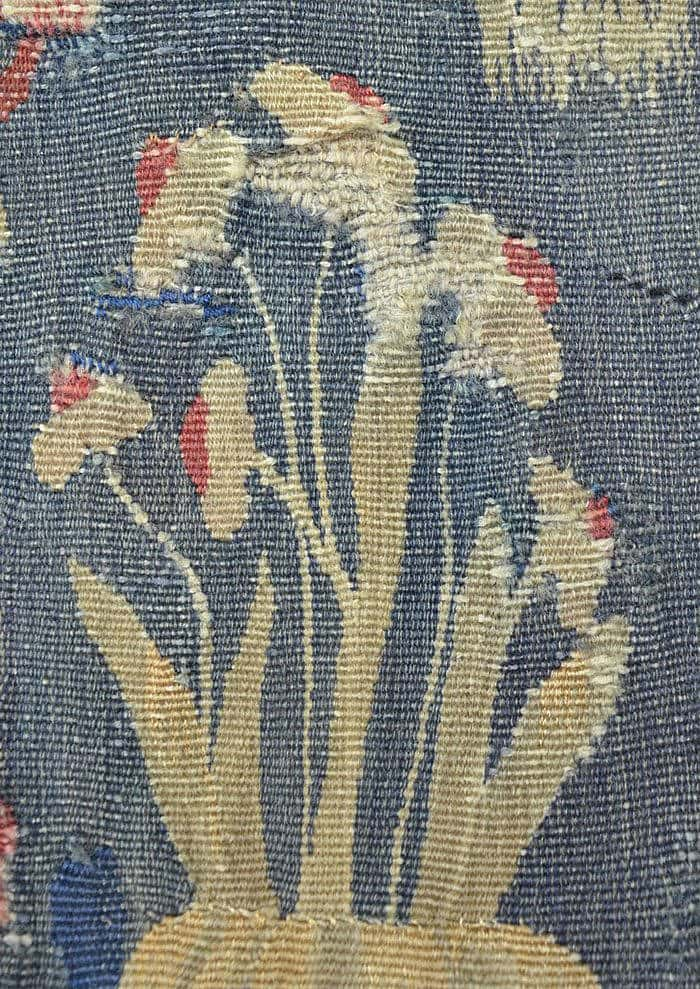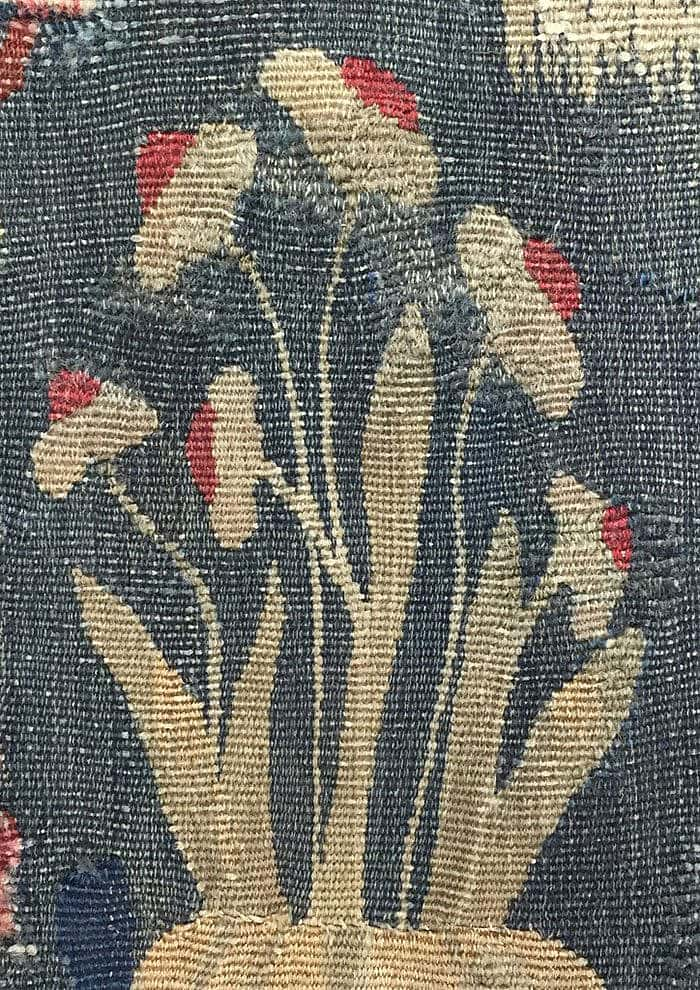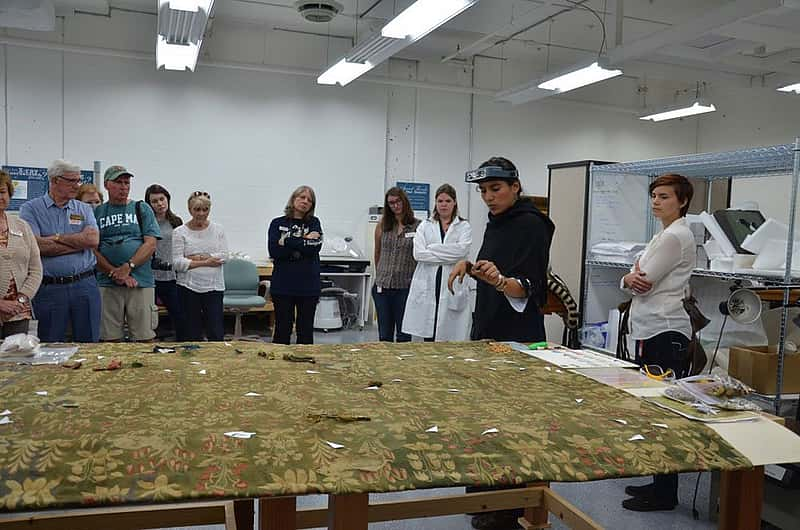
The One with the Tapestry
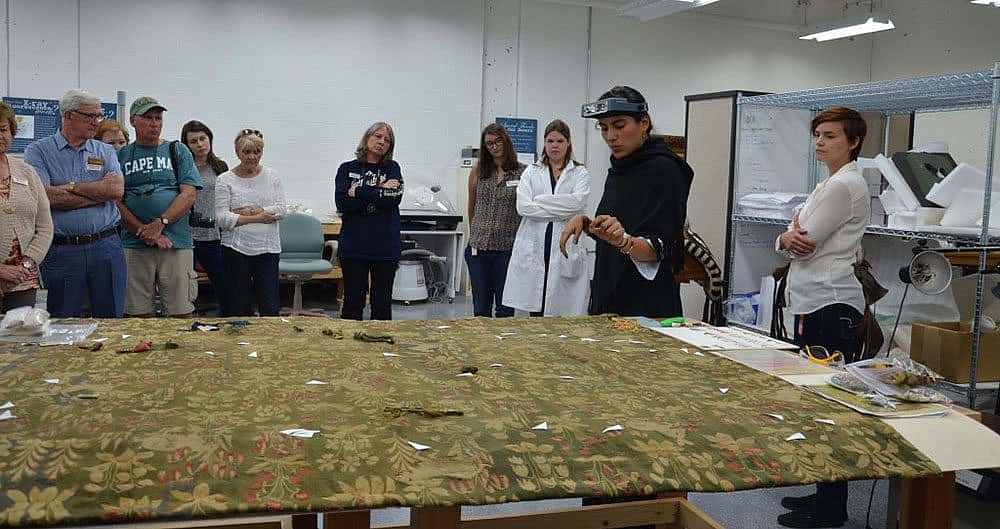
My first textile conservation project at the Center of the West was a sixteenth century European tapestry privately owned by one of the Conservation Internship Program’s most generous donors (she has funded a great many interns!). It is a big and beautiful work of art that had been waiting to go back home at the end of this summer. I decided to choose a specific flower patch on the tapestry’s lower right corner to work on.
Before this summer started Beverly, the chief conservator at the Center and our mentor, said there had already been more than three hundred hours of intern work done on the tapestry. Some of the work past interns had done included sewing open tears, water-coloring old repairs, stitching new warp in necessary areas of loss.
There have been many past treatments done on the tapestry before it arrived in our lab. These include possible patchwork, some embroidered embellishment, and possible resizing of the tapestry itself.
First, I removed previous mismatched weft stitch work from a spot next to a flower spot, as shown on the navy blue area by the flower head below.
Next, I color-matched cotton embroidery thread to the tapestry and stitched it on areas of weft loss, like the blue/grey background and green leaf. It is key that the stitch work follow the original thread pattern of the textile, in this case going vertically.
Sometimes there was no available thread that rightfully matched the color of the tapestry, so I would choose a lighter shade and watercolor the thread before stitching it on. There were also occasions where a previously added single warp was a substitute for two original lines of warp, which I decided to separate back into two with my stitch work. In instances of large areas of detail loss on the flower, I had to look at other similar flowers on the tapestry and, based on my observations, recreate these areas of loss. It was challenging but fun!
After almost forty hours of work on the flower, this puppy was ready and eager to go home. It isn’t perfect but I’m satisfied with the results. I think future conservators will be able to identify where I’ve worked on in my first textile treatment of many to come, and I’m a proud mom.
Written By
Vanessa Ocaña-Mayor
Vanessa was born in Lima, Peru and raised in Florida. She graduated from the University of Florida in 2014 with a BA in Anthropology and BFA in Sculpture. Vanessa served as a summer 2015 conservation intern at the Buffalo Bill Center of the West in Cody, Wyoming, and plans to pursue a career in Textile Conservation.
